In May of 2022 Susan Conrad, a petite snowy-blonde with a welcoming smile slipped her lavender sea kayak, Prudence, into the Salish Sea and paddled away from San Juan Island, in northwest Washington State.
This seemingly common act was nothing new for Conrad, who has been an avid paddler for 30 years, and a lifetime adventurer. Incredibly, neither was the lofty trajectory of her trip—the Inside Passage.
The Inside Passage is an oft-travelled water route on the Pacific Coast for ships and boats running from Washington to Alaska—a dizzying endeavor to consider in a paddle craft.
Conrad had completed the expedition once before in 2010. At that time, her life felt as if it were coming apart at the seams, and she undertook the solo journey as a means to anchor herself once again.
“I absolutely love the heightened awareness and the sense of empowerment that comes from [relying] 100% on my own skills and abilities, and with that comes this intense sense of freedom,” Conrad said.

Prudence on the beach. Courtesy of Susan Conrad
This time however, it was different.
Yes, she wanted to prove to herself that she could still undertake an expedition of this magnitude alone, but she also wanted to give back in some way, to this place that has been so instrumental in her personal journey.
What’s more, she wanted to follow in the paddle strokes of her hero—a woman named Audrey Sutherland, who had extensively solo paddled the area in an inflatable kayak well into her 80s.
Thus, following Sutherland’s motto of—Go Simple. Go Solo. Go Now—Conrad dipped her paddle into the salt water and took the first strokes of her 1,200-mile journey.
Great Bear Rainforest
When asked what she loves about the Inside Passage, Conrad braids together an answer with pieces that include, the love of daily travel through a world-class marine environment, the sense of place and peace it provides her, and the truly unique majesty of land and sea features found there.
A region that she has a particular affinity for is the Great Bear Rainforest, along the coast of British Columbia (B.C.), Canada.
The Great Bear Rainforest comprises nearly 16 million acres and is a part of the larger Pacific Rainforest ecoregion—the largest temperate rainforest on Earth.
In an effort to bring awareness to, and further conservation efforts within the Great Bear Rainforest, Conrad partnered with Pacific Wild on a fundraising campaign that took followers along on her journey while paddling through this unique ecosystem.
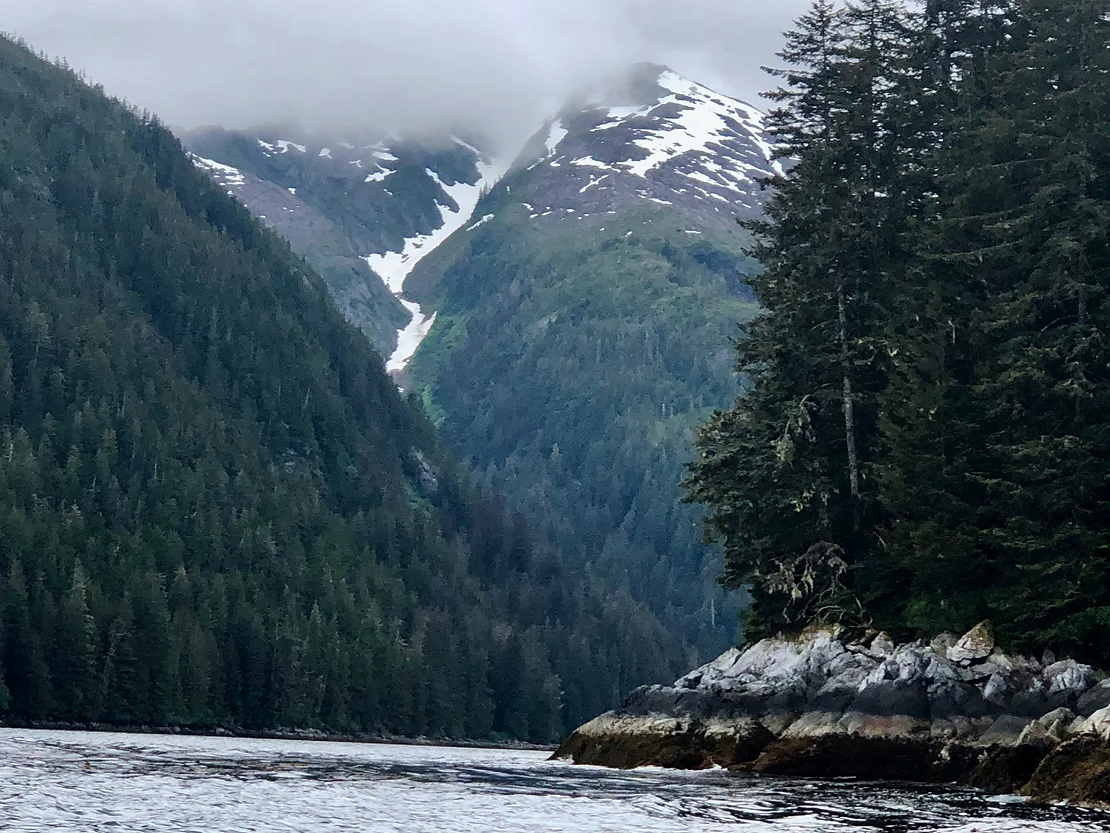
Baranof Island, Alaska. Courtesy of Susan Conrad
Using a Strigo device, that enables connectivity in remote areas by utilizing satellite technology, Conrad sent photos, text, audio and video to the Pacific Wild team, who created a story map in real time.
“The purpose of Susan's journey is, in part, to bring awareness to Pacific Wild's pivotal work campaigning for marine protection on the north and central coast of B.C., [highlighting] the biodiversity, richness and abundance that lives in the Great Bear Rainforest,” Pacific Wild said.
“Marine protected areas (MPAs) are put in place in areas that need established protection for long term conservation of marine species, habitats and ecosystems.”
These MPAs are part of a network of protected sites that vary in permitted uses. All carry high levels of protection that are strongly enforced and community supported. These efforts are Indigenous led or co-managed, in partnership with provincial or federal governments.
The MPA network is part of furthering a broader goal for Canada—which boasts more coastline than any other country on Earth—and that is to protect 30% of its oceans by 2030.
As Conrad says, “You only conserve what you love, and you'll only love what you understand.”
To this end, she noted prior to the conclusion of their fundraising campaign that, “I'm hoping that by raising awareness with my paddle that people will be inspired and motivated and understand Marine Protected Areas better and want to advocate for marine protection in this incredible region."
With the generous outpouring from many inspired donors, the goal of Conrad and Pacific Wild was realized. They successfully raised $40,000 through the campaign—all of which was funneled directly back into the Pacific Wild Marine Protection Campaign.
By strengthening conservation efforts in this critical area there is hope for healing this precious ecosystem, and our planet, now and into the future.
As Ian McAllister, co-founder of Pacific Wild says, “We simply need to stop doing harm, protect what we have, and the abundance of life that once characterized this coast will return and thrive when it does.”
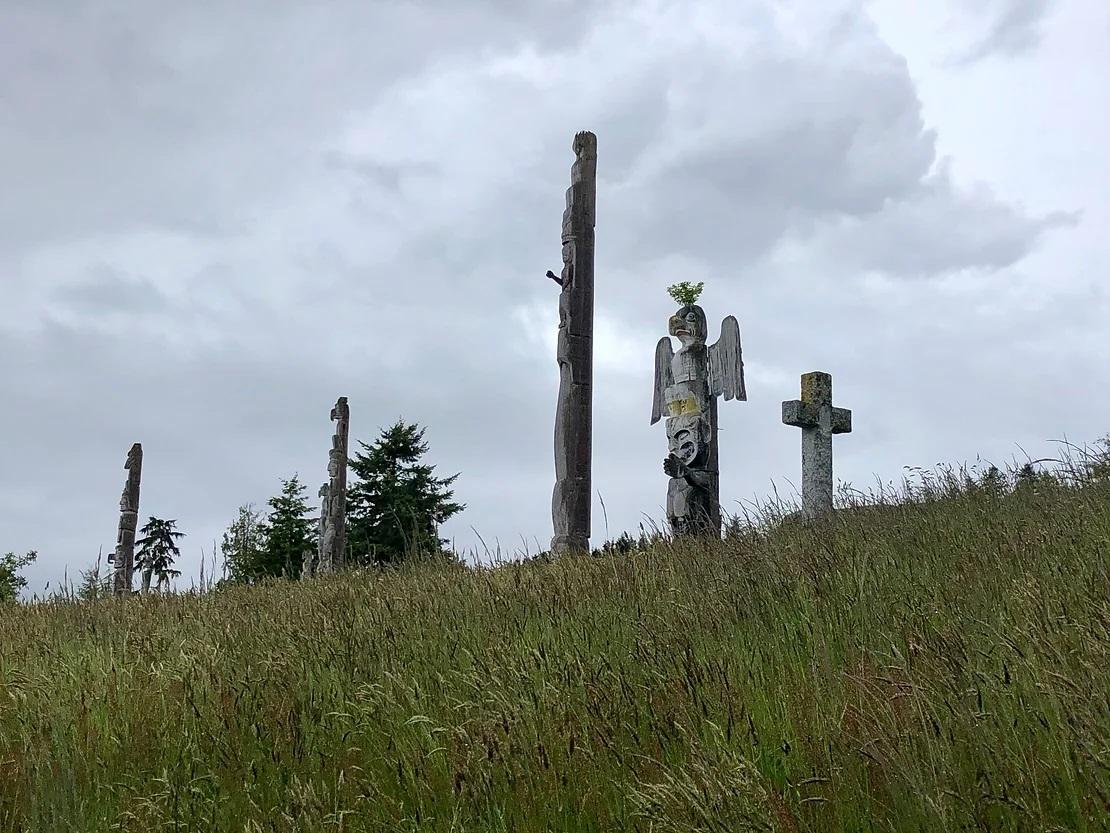
Totems on Cormorant Island, B.C. Courtesy of Susan Conrad
From Adventurer to Adventurepreneur
This act of giving back to the natural world speaks to the place of esteem it holds in Conrad’s life. Indeed, one she has built her life around.
Conrad has been an adventurer since childhood, where she spent long days exploring the 500-acre dairy farm she grew up on in upstate New York, and wherever her bicycle would take her beyond those boundaries.
As she entered adulthood she pecked her way across the country, exploring on foot, bicycle and skis, until she landed in Montana—where she made her home for 20 years.
Previously, having embraced whitewater rafting and kayaking on rivers, it wasn’t until she began exploring the glacially carved lakes in the northwest part of the state that she discovered sea kayaking.
With her maiden voyage she was hooked. “What immediately resonated with me was how ‘one with the boat’ I felt," she said. "I was ensconced in a vessel that I literally wore, that suited my body type, my personality, my soul.”
“It was like backpacking on the water—you can fit all your gear in the hatches and just disappear for days and, what would evolve into weeks and months, at a time. It was really a game changer for me.”
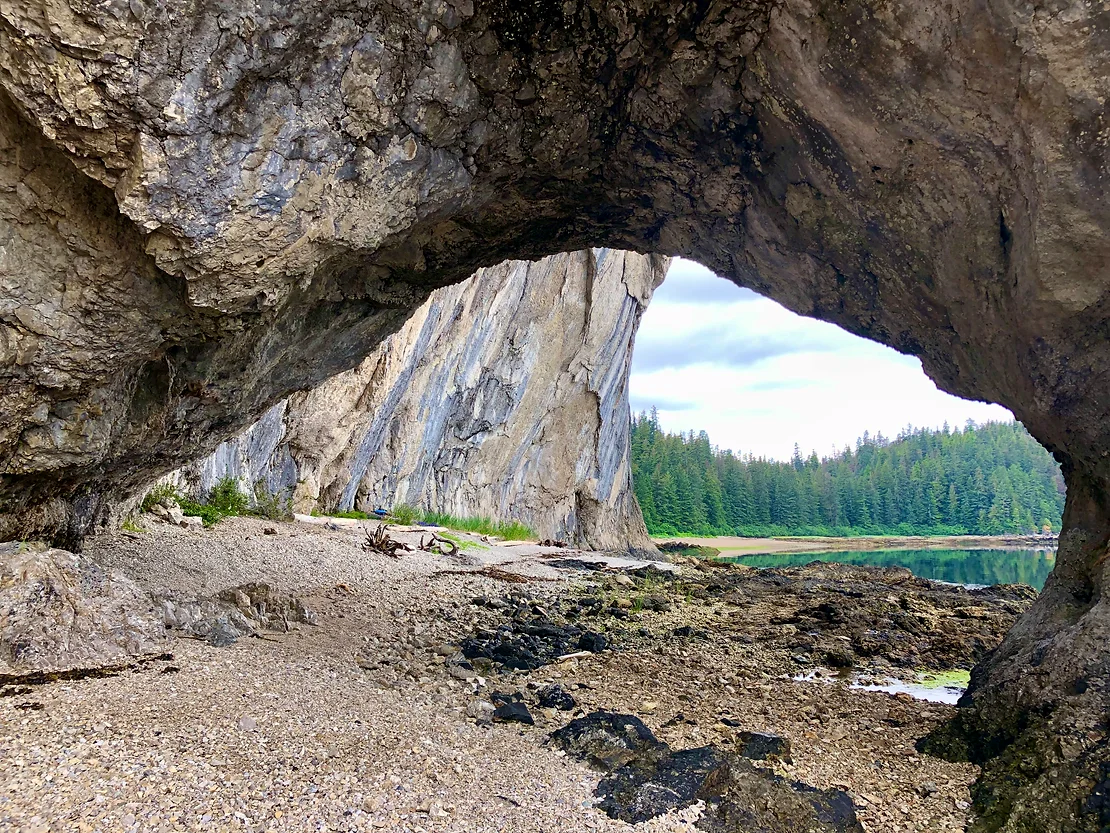
Sea arch in Alaska. Courtesy of Susan Conrad
Kayaking and outdoor pursuits soon became more than a passion, they were a lifestyle.
The revelatory experience led her to guiding in Montana for 10 years, before an eventual transition to the saltwater of the Salish Sea and the Pacific Coast.
In Washington State she co-owned a kayak touring and coaching business, an endeavor she transitioned out of prior to her first Inside Passage expedition in 2010.
While a solo voyage of the Inside Passage was once squarely located in the category of things that Conrad did not believe she’d do, so was what she did upon her return—writing her first book.
"Inside: One Woman’s Journey Through the Inside Passage" is a memoir that recounts the story of Conrad’s first expedition and the healing, strength and courage she found along the way.
In building upon the momentum that was mounting, Conrad began sharing the story of her journey through public speaking engagements—something that has become an increasingly significant part of what she does.
Since the publishing of "Inside," she has authored several more books. Her debut children’s book, "Inside the Sea of My Dreams," is an adapted and illustrated version of her memoir. She has also put her photography skills on display with "Wildly Inside: A Visual Journey Through the Inside Passage."
Conrad is currently writing a book about her personal hero, Audrey Sutherland.
She has also become an ambassador for paddling and the outdoors through affiliations with gear and paddle manufacturers as well as the organization Women Who Paddle, whose mission is to “connect women with one another and the outdoors through human powered watersports”—an initiative that Conrad holds dear.
These efforts have resulted in her transforming her passion into her business—transitioning her from adventurer to “adventurepreneur.”
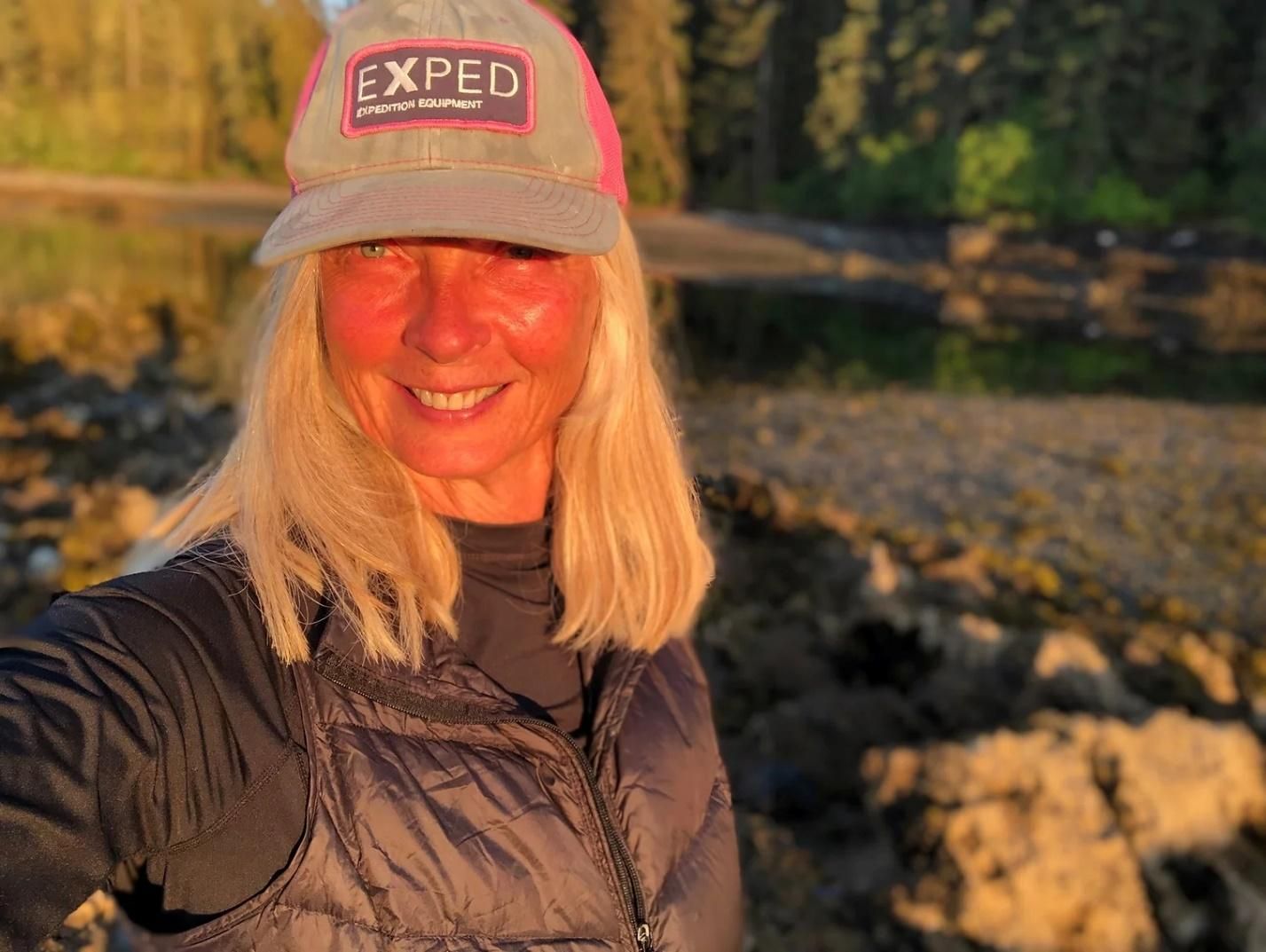
Susan Conrad—adventurer, author, speaker. Courtesy of Susan Conrad
Unassuming Hero
When asked about her current project of writing a book about her role model, Audrey Sutherland, Conrad orbits around the qualities that are reflected in the anecdotes that, perhaps, landed Sutherland in the New York Times’ Overlooked section—a column of noteworthy posthumous obituaries—five years after her death.
Sutherland was quiet, unassuming, adventurous, scrappy, determined and generous with her knowledge.
She raised four children alone in Hawaii, earning her living as a school counsellor. Eventually authoring several books on paddling.
After taking up sea kayaking at the age of 61, Sutherland proceeded to paddle tens of thousands of miles in an inflatable kayak, extensively exploring southeast Alaska and the B.C. coast alone, over the course of 25 years.
She often pecked out her expeditions with simple gear and food supplies that she preserved herself. She would sometimes disguise herself as a man so as not to draw attention to herself.
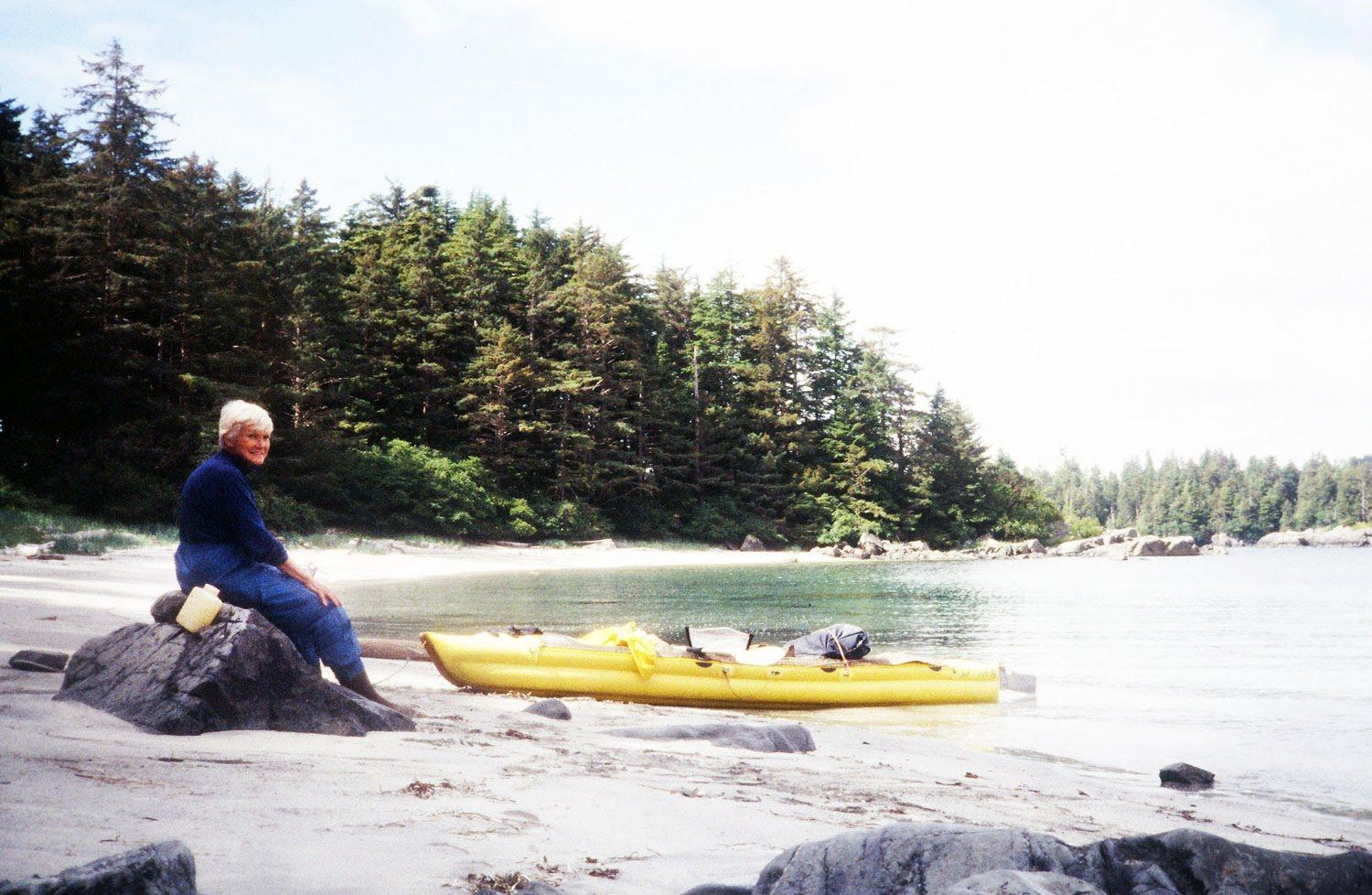
Audrey Sutherland with her kayak. Courtesy of the Audrey Sutherland Collection
It’s these types of stories that magnetize Conrad to her and implore her to tell Sutherland’s story, for the genuine person she was, but also for the legend that she deserves to be.
Conrad was first introduced to Sutherland’s life and legend through her paddling mentor, Jim Chester, while living in Montana.
Sutherland had been Chester’s mentor. When he set out to complete his own Inside Passage journey in 1992, Sutherland insisted that he send her his navigational charts so that she could annotate them.
She provided intel on potential campsites, resources for fresh water, and points of navigational concern. Her light script and gentle initials, A.S., dot the 32 paper charts of her protégé.
In an incredible act of kindness, Chester entrusted these personal treasures to Conrad for her maiden voyage up the Inside Passage.
Shortly after the culmination of Conrad’s 2010 journey, Chester passed away.
Conrad inherited the charts, as well as other books and keepsakes. As she was sifting through these freshly acquired items, she stumbled upon a stack of letters from Sutherland—the correspondence spanned decades and chronicled the unique relationship the two shared.
With the realization of what she had in her possession, Conrad knew she had to help tell Sutherland’s story.
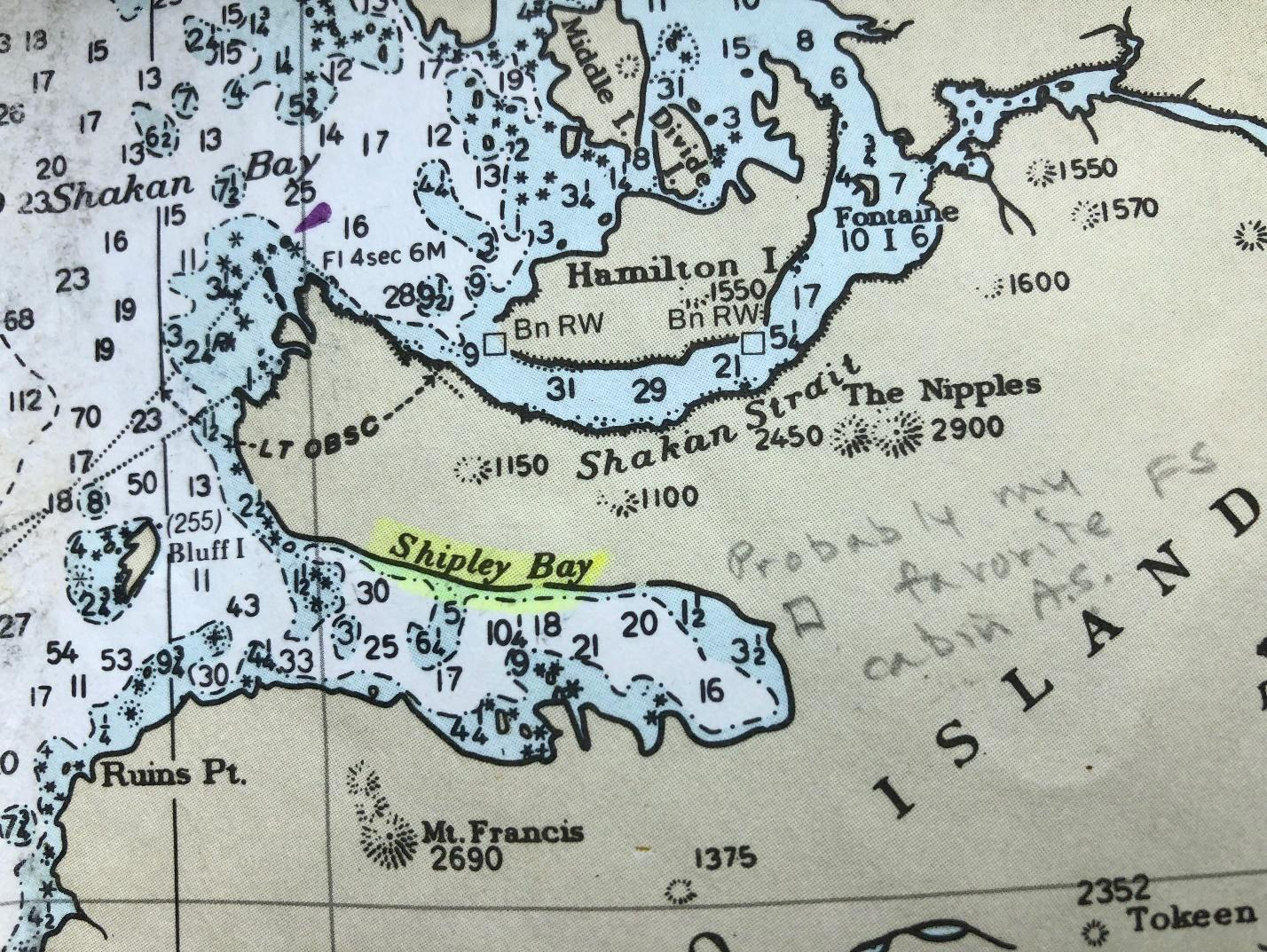
Chart annotated by Sutherland. Courtesy of Susan Conrad
In undertaking the epic journey of the Inside Passage for a second time, Conrad felt led to retrace some of her hero’s paddle strokes. Thus, once she reached the Alaska leg of her journey, armed with the annotated charts and her own hopelessly dogeared copy of Sutherland’s book, "Paddling North," she set out to lay her head on many of the same bunks and beaches as Sutherland had years ago.
“For me, personally, there is a palliative power in her approach to life and adventure. I’ve learned from Audrey that the boundaries of our limits are only defined by what the mind believes is possible and the enthusiasm to pursue them,” Conrad said.
When asked if she was ever afraid, in general, or as a byproduct of being alone, she first sited a quote from Sutherland, “Fear is more of a problem than the problem feared."
Then went on to say, “I think anything worth doing in our lives will always have some fear attached to it. As a woman traveling solo on the Inside Passage, I entertained a lot of fears, both real and imagined... Most of the time I kept my fears in check by having this little conversation with myself: is the fear I'm experiencing directly proportionate to what's actually happening right in front of my face?”
The fear Conrad felt when a brown bear and her cub ran onto the beach she occupied was proportionate—in that instance she took appropriate action by yelling and making herself look big in a successful effort to move the pair along.
In other instances, she took appropriate action to put baseless fear in its place through self-talk that took fear out of the driver’s seat and putting herself firmly back in it.
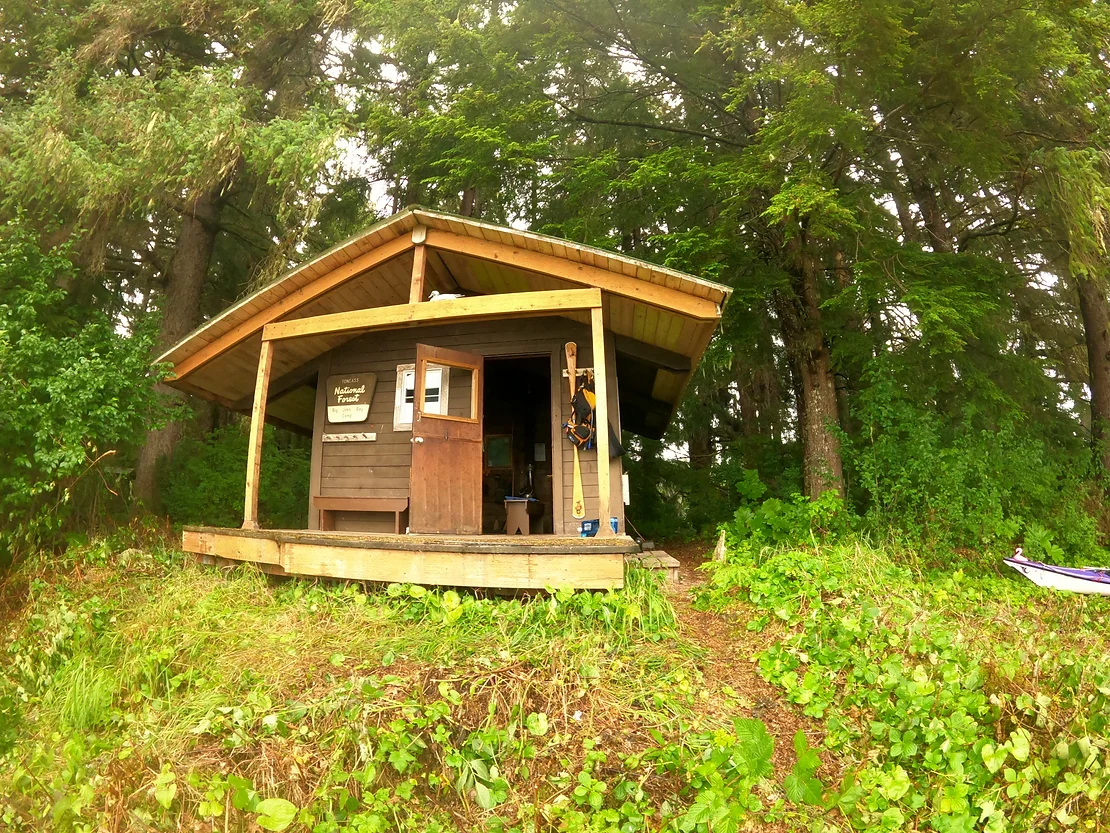
Big John Bay cabin in Alaska. Courtesy of Susan Conrad
With the essence of her role model pushing her on like a tailwind, Conrad was able to dig deep once again to find the courage to live life on her own terms.
It is this spirit that the two women share—one drawing inspiration from the other, one actively passing that baton forward.
While Conrad finds inspiration in the life and pursuits of Sutherland, it is Conrad herself who is also inspiring a new generation of women to embrace autonomy in the outdoors, step outside their comfort zones and ultimately grow from it.
“If done with the intention of creating a safe and empowering space, the physical challenge of being on the water and out in nature with other women can create a sense of community, of belonging. It's also a great way to reduce stress, get unplugged, and improve one's mental outlook,” Conrad says.
Though she is passing the baton forward, she is still gleaning wisdom from her predecessor. Conrad sites how Sutherland grew older with authenticity and grace, rejecting the notion of being a diminished version of her younger self—something that Conrad is embracing and embodying with every paddle and pen stroke of her own.
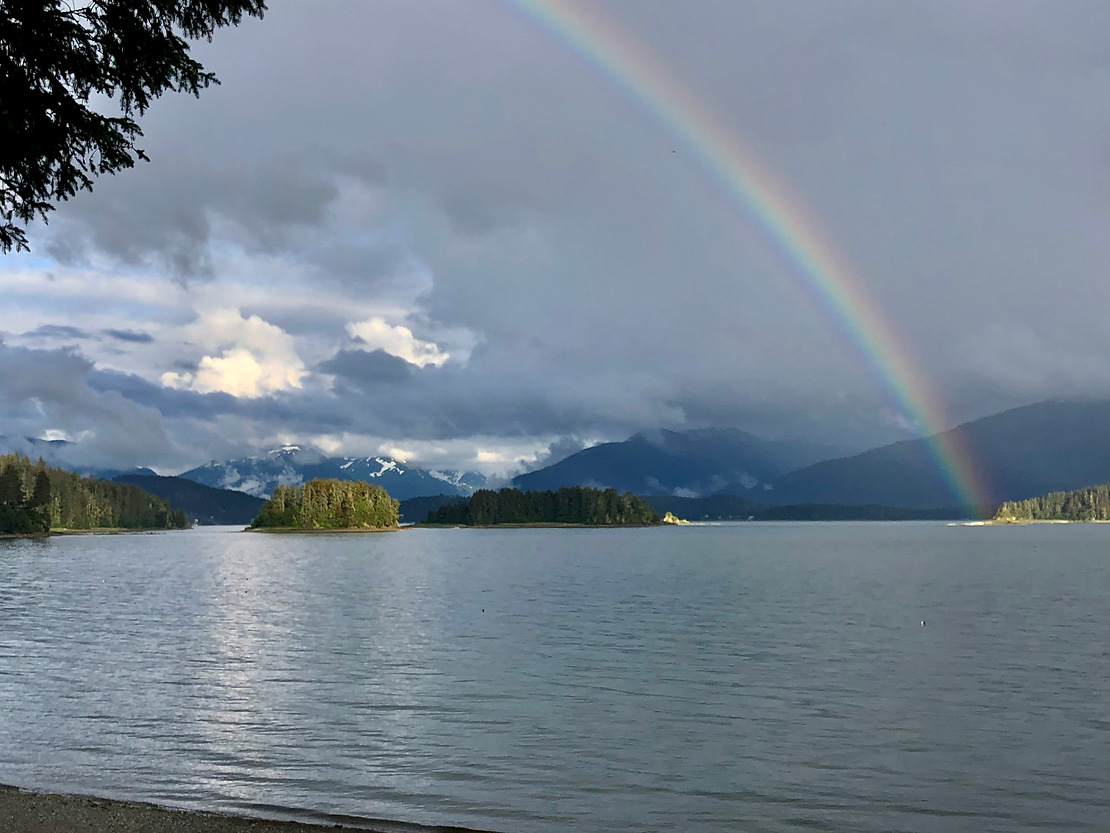
A good omen along the way. Courtesy of Susan Conrad
